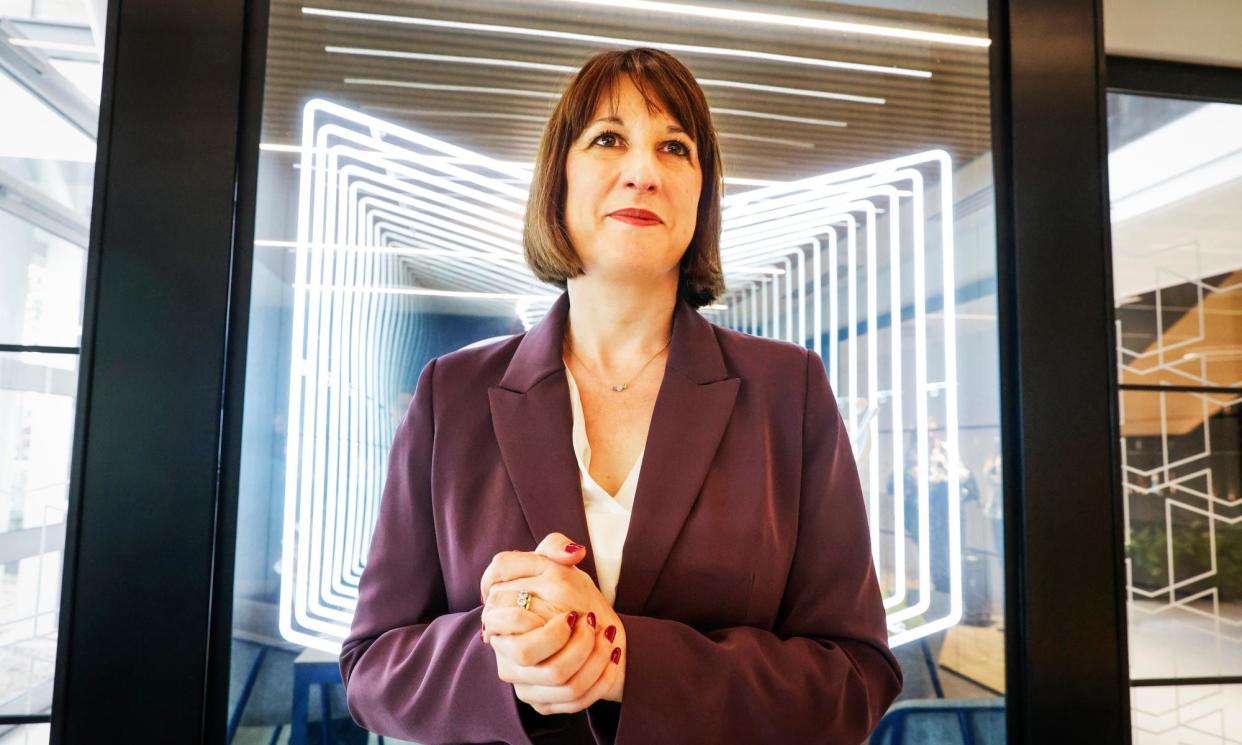‘Mansplaining’ UK election coverage marginalises women’s concerns, study finds

General election coverage has been dominated by male voices, according to researchers from Loughborough University.
Academics from the university’s Centre for Research in Communication and Culture have conducted news audits for every general election since 1992. They analyse TV coverage from BBC One, ITV1, Channel 4, Channel 5 and Sky’s evening news bulletins, plus print reporting by the UK’s broadsheet and tabloid newspapers.
Since campaigning began on 30 May, only seven of the top 20 most prominent figures in election coverage have been women. In the past week, that figure fell to six.
Dr Jilly Kay, senior lecturer in communication and media, said: “We’re seeing the continued dominance of men’s voices, which has been an established pattern throughout the campaign.”
Related: Let me mansplain: studies reveal impact of condescension
The shadow chancellor, Rachel Reeves, was the woman who received the most coverage, ranking fourth behind Rishi Sunak, Keir Starmer and Nigel Farage. That trio received a combined 70% of coverage last week, compared with Reeves’s 5%. “In terms of how visible [women] are and how much their voices are heard, it is a lot less than men,” Kay added.
Researchers looked at the speaking time given to women and men across campaign coverage and found women accounted for only 22%. Among politicians, Kay said, “this is even less: it’s 19.4% speaking time on television for women and 18.8% in the press. It’s a really stark divide.”
In the final leaders’ debate between Starmer and Sunak, broadcast last Wednesday on the BBC, moderator Mishal Husain received a round of applause when she challenged Sunak after he repeatedly talked over her.
“We normally think about mansplaining as a kind of interpersonal problem, where men are speaking over women,” said Kay. While there are instances of this, she said, researchers have also identified a pattern of “media mansplaining”, where election-related interviews with sources from government, academia, business, trade unions and thinktanks are also mostly male.
“Women are not being given meaningful or representative voices in the election campaign. They’re being systemically marginalised, so it’s trying to think about mansplaining on a systemic level. When women are represented, it tends to be as laypeople, not as experts.”
The BBC launched its 50:50 Project in 2018 to track – and work to improve – the gender balance of its contributors, including experts. Just over half the content teams taking part reached their target of 50% gender equality last year, according to the broadcaster.
The Loughborough researchers also track the prominence of different topics in election coverage. The investigation into political betting that has engulfed Conservative party members and a Labour candidate pushed “standards, corruption, scandals and sleaze” up the media agenda, making up 15% of this week’s coverage.
Meanwhile, stories about “minority groups” and “culture wars” were both among the top 20 most covered topics, with the former constituting 5% of all election coverage.
Three of the women who received most coverage in the past week did so because of comments made about the rights of trans people, with JK Rowling given the sixth most media attention of all individuals.
“Previously, women’s issues when they appeared in the media would have been around health, mothering, childcare,” said Kay. “What we’re seeing in this election is that women’s issues are being framed around the conflict around ‘gender ideology’. A potential interesting finding is how that focus might be crowding out other issues pertaining to women.”
Overall, analysis of the gender gap during this campaign “points to enduring inequalities”, said Kay. “Women are underrepresented in parliament: 35% of MPs before parliament was dissolved were women. But the media [is] not simply representing that inequality, it’s exacerbating that inequality.”


